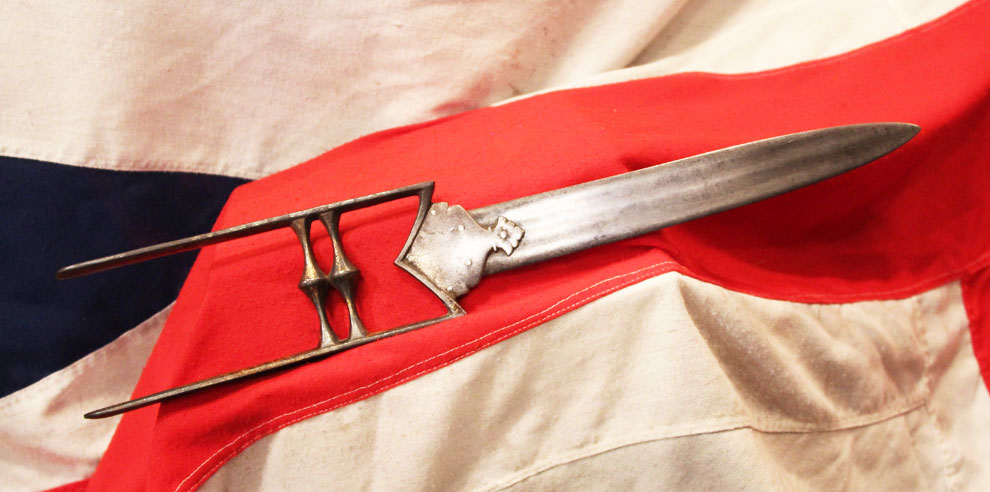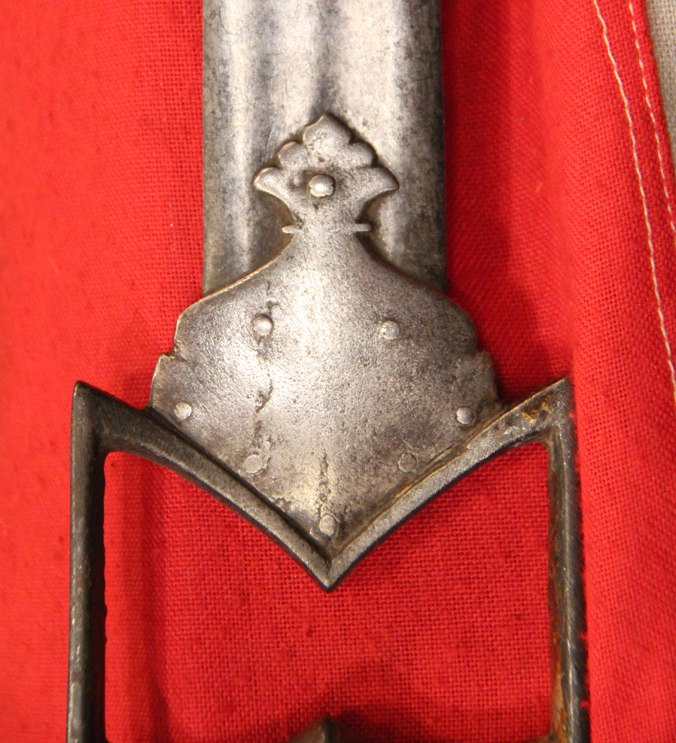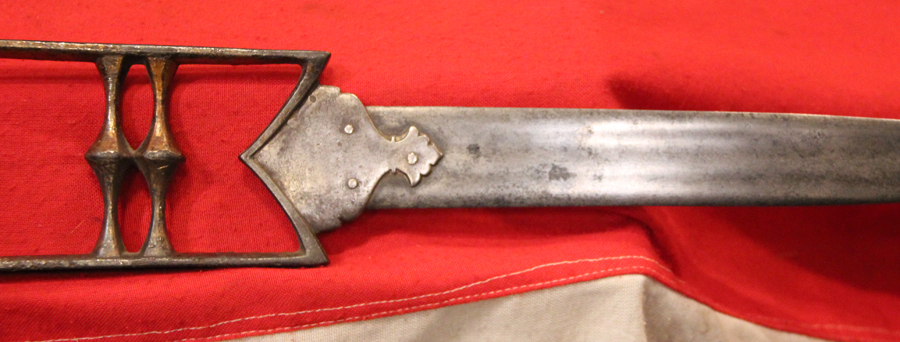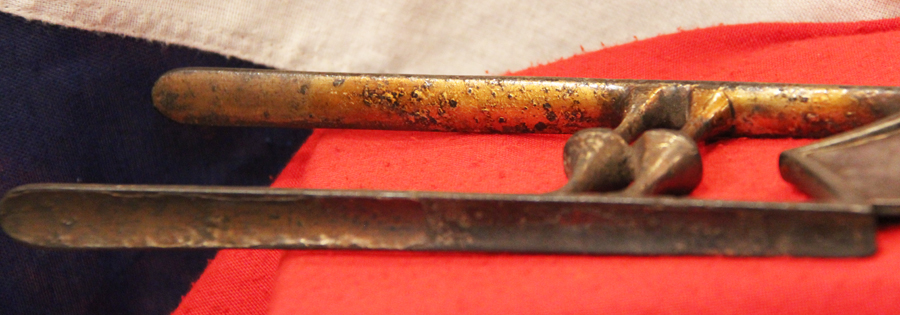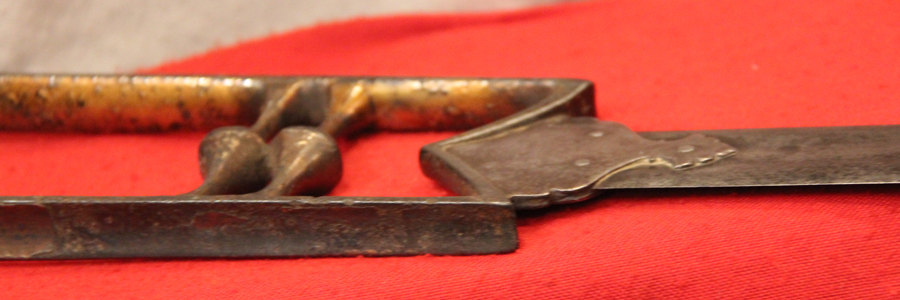An Amazing and Very Fine Original Moghul Empire Katar, As With Most Of The Finest Surviving Katar It Has a 17th Century European Blade. Made and Used From the Time Of Moghul Emperor Shah Jahan
Indian katar from the era of Shah Jahan, builder of The Taj Mahal, the most famous monument to a beloved wife in the world. This wonderful Katar push dagger is mounted with a likely German sword blade from the early 1600s. It was very popular in the Moghul era to import German blades and mount them with Indian hilts. The blade is attached to the hilt with traditional multi rivetting, and the chisseled hilt is overlaid in areas of sheet silver or gold, as would be suitable for a prince. It appears gold in colour but it may be aged silver. Painting circa 1650 of Moghul Shah Shuja who was the second son of the Mughal Emperor Shah Jahan and Empress Mumtaz Mahal, wearing his similar Katar. He was the governor of Bengal and Odissa and had his capital at Dhaka, presently Bangladesh.
Shah Jahan is best remembered for his architectural achievements. His reign ushered in the golden age of Mughal architecture. Shah Jahan commissioned many monuments, the best known of which is the Taj Mahal in Agra, in which is entombed his favorite wife, Mumtaz Mahal. His relationship with Mumtaz Mahal has been heavily adapted into Indian art, literature and cinema. He owned the royal treasury, and several precious stones such as the Kohinoor and has thus often been regarded as the wealthiest person in history.
The death of his father Jahangir in late 1627 spurred a war of succession between his sons Shahryar and Khurram from which Shah Jahan emerged victoriously. He executed all of his rivals for the throne and crowned himself emperor on January 1628 in Agra, under the regnal title "Shah Jahan" (which was originally given to him as a princely title). His rule saw many grand building projects, including the Red Fort and the Shah Jahan Mosque. Foreign affairs saw war with the Safavids, aggressive campaigns against the Shia Deccan Sultanates,10 conflict with the Portuguese, and positive relations with the Ottoman Empire. Domestic concerns included putting down numerous rebellions, and the devastating famine from 1630-32.
In September 1657, Shah Jahan fell seriously ill. This set off a war of succession among his four sons in which his third son, Aurangzeb, emerged victorious and usurped his father's throne. Shah Jahan recovered from his illness, but Emperor Aurangzeb put his father under house arrest in Agra Fort from July 1658 until his death in January 1666. He was laid to rest next to his wife in the Taj Mahal. His reign is known for doing away with the liberal policies initiated by Akbar. Shah Jahan was an Orthodox Muslim, and it was during his time that Islamic revivalist movements like the Naqsbandi began to shape Mughal policies
Code: 21565
785.00 GBP

